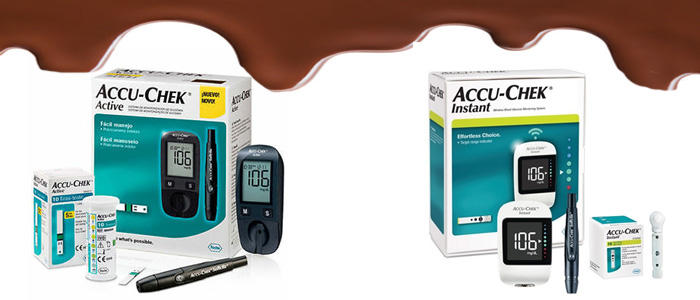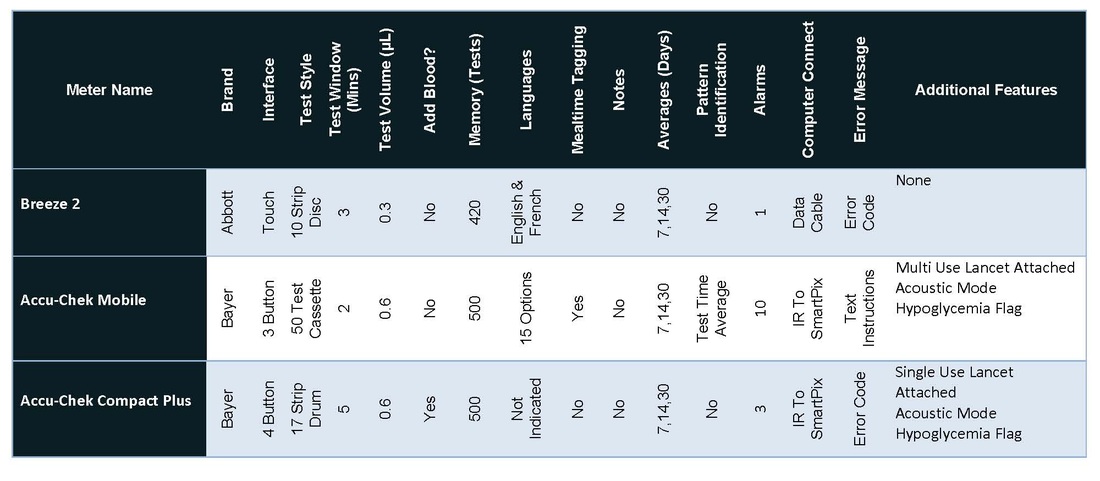


Have contaminants (oil, lotion, food) on the sample areaĪccuracy Tip: You should always keep your test strips in their container, stored at the temperature specified by the manufacturer.Inaccurate results can come from test strips that: The meter then converts that into a concentration of glucose to give you a reading.īecause this process is so complicated, your test strips can be very sensitive to variables. This releases electrons, creating an electrical current. When you use a test strip, the glucose in your blood interacts with enzymes on the strip. 8 Factors That Can Affect Glucose Meter Accuracy Test Strips
#COMPARE ACCU CHEK TEST STRIPS ISO#
Their most recent draft guidance represents their current thinking on accuracy and relies heavily on the ISO guidelines. The FDA, which oversees products cleared in the U.S., has its own system accuracy recommendations. It also requires 99% of results to fall within zones A or B of the Consensus Error Grid.

For a system to meet the latest ISO 15197:2013 accuracy standard, 95% of blood glucose results must be within 15% (for values equal to or greater than 100 mg/dL) and 15 mg/dL (for values below 100 mg/dL). The standards set by the organization are intended to ensure quality, safety, and efficiency, so that you can be confident in your purchases.īlood glucose meters are one of the many products with ISO standards. ISO, also known as the International Organization for Standardization, is responsible for developing and publishing specifications for products and services. So, if your lab result says that your blood glucose is 100 mg/dL, your meter might report your results as 85 mg/dL or 115 mg/dL and still be considered accurate. Without going into detail on how your circulatory system works, there are other factors that may cause the two readings to vary slightly, but typically a result from a meter that’s within 15-20% of your lab reading is considered accurate. Blood glucose meter test results are not exact measures, but they’re designed to give you accurate readings for daily treatment decisions when you’re not at a doctor’s office. Lab tests generally demonstrate a higher level of accuracy than personal blood glucose meters, but even these machines can have a slight margin of error. Virtually all home glucose meters factor in the difference of using a whole blood sample while providing a test result that is considered plasma equivalent. In a lab test performed by clinical staff, the sample is typically drawn from a vein in your arm and processed to remove red blood cells, so only the plasma is tested. Personal meters measure your blood glucose using a sample from your fingertip (or alternate site), and then analyze the whole blood, including red blood cells and all.
#COMPARE ACCU CHEK TEST STRIPS PROFESSIONAL#
Laboratory tests performed by professional healthcare providers.How Blood Glucose Accuracy is Determinedīlood glucose is measured primarily in two ways:.If you have any further questions or concerns, please call Accu-Chek on 0800 701 000 or visit .Since your readings determine your insulin doses, diet choices, and other health factors, having an accurate blood glucose meter is crucial for managing your diabetes. Return strips from the affected lots to the pharmacy or retailer where you obtained them for a replacement pack Affected lot numbers: Accu-Chek Aviva strips (50s) Stop using strips from the affected lots immediatelyģ. You can find the lot number on the top flap of the carton packaging as well as on the label of each test strip vial as shown in the picture below.Ģ. Check the ‘lot numbers’ of your test strips against the complete list provided below. Steps to take if you use Accu-Chek Aviva or Accu-Chek Performa test strips:ġ. However this is not always the case, as other strips may produce a reading that is too high or too low, and which may not easily be detected. Some strips may cause an error message to be displayed upon insertion into the blood glucose meter. Roche Diabetes Care has discovered a fault causing incorrect readings in some batches of Accu-Chek Aviva and Accu-Chek Performa test strips.


 0 kommentar(er)
0 kommentar(er)
